Lotus seed paste is a sweet, sticky filling that one can find in many Asian desserts and pastries, such as mooncakes. With the help of time-tested traditional recipes from chefs, this ubiquitous paste is easy to recreate in your own kitchen as this article will reveal.
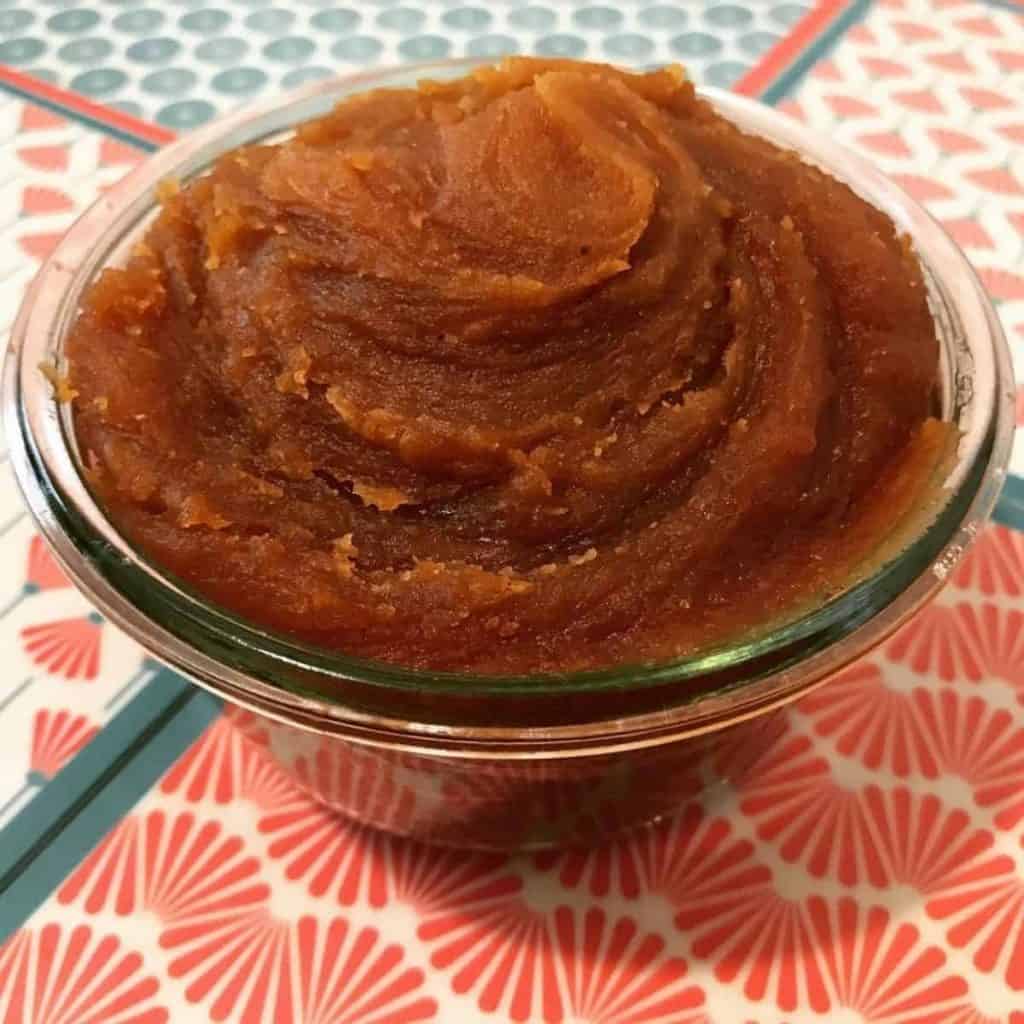
Learn all you need to know about how to make this traditional Asian sweet filling at home!
Jump to:
What is lotus seed?
Lotus seeds are harvested from the lotus plant, a floating water lily plant that grows native to eastern Asia. Each plant's head is packed full of green lotus kernels that need to be popped out of the plant. The seeds are the main ingredient in making lotus seed paste.
Once cracked open, these seeds are creamy white, with a green germ. They are high in B vitamins, which keep the cells in your body healthy. They are also high in protein, manganese, and phosphorus, all of which contribute to healthy teeth and bones.

The Chinese also use these kernels in Traditional Chinese Medicine to help with heart and kidney functions. It helps with replenishing spleen deficiency, easing symptoms of heart and kidney-related diseases.
Traditional Chinese Medicine practitioners use the root plant as well as lotus seeds to treat conditions such as diarrhoea and to regulate body metabolism. For those with insomnia, it helps to calm the nerves and reduce sleepless nights.
It is common to find them mixed into flour for baking, puddings, and candies, or cooked into lotus seed paste desserts. A nutrient-rich food packed with calcium, protein and vitamins, the seed is a wonderful supplement for everyone and we can easily incorporate them into a gluten-free, plant-based diet.
In India, the seeds are eaten spiced and roasted. The snack eases stress and anxiety, promoting better sleep.
What does lotus seed taste like?
Lotus seed paste has a mild and underwhelming taste in comparison to the raw seeds. As it is not too cloyingly sweet, that is why the paste is a popular choice for fillings.
However, raw and green kernels taste sweet and chewy. Mature seeds are black. When cooked and dried, the shell needs to be popped open to reveal a creamy inside.
This fleshy middle tastes like chestnut, or comparable to green almonds. When you chew it, a slightly sweet and tangy after tinge lingers on the tongue.
What is lotus seed paste used for?
We can eat lotus seeds both raw and cooked. More commonly though, people soak them in hot water and then ground them into puree to make dessert. You can find this sweet paste in many Asian pastries such as mooncakes, tangyuan, and buns.
Mooncake
A mooncake is a baked Asian pastry that is eaten during the mid-autumn festival. This festival is to celebrate the mythical Moon goddess, Chang-er, and usually happens in October.
Traditionally, the Chinese eat mooncakes during this festival. The roundness of the pastry symbolises a reunion of family and friends, and the touch of sweetness within emphasises the joy of gathering with your loved ones.
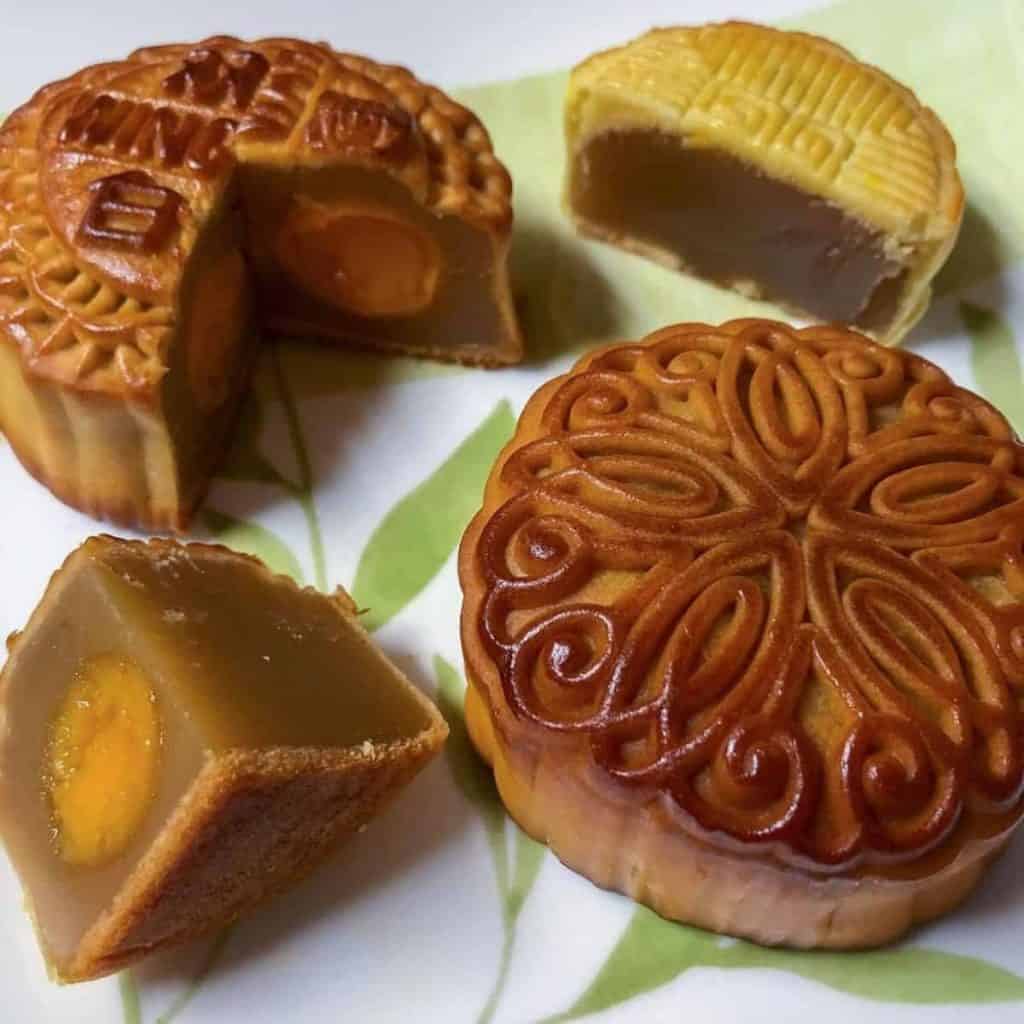
As splitting open and grounding fresh kernels is quite tedious, the Chinese consider good mooncakes with a thick lotus seed paste filling as a luxurious premium product.
In many Asian countries such as China and Singapore, the mooncakes can cost a small fortune and are packaged in beautiful boxes, to be gifted to loved ones. Companies also buy them to give away as corporate gifts to thank loyal clients.
Tangyuan
Similarly, the tangyuan, which is a round glutinous ball of glutinous rice flour, is stuffed with the lotus seed paste sweet filling. The Chinese usually serve tangyuan balls with sweet syrup.
The dessert is usually eaten during festivals such as the Chinese New Year or the Mid-autumn festival. However, they are also served during important occasions like weddings and family reunion dinners. Just like the mooncake, the roundness of the dessert and its filling within symbolise a sweet family reunion.
However, these days, the tang yuan appears as a year-round dessert, and also has many variations around Asia. For example, the Burmese serve tang yuan with coconut shavings–an interesting dessert for sure!
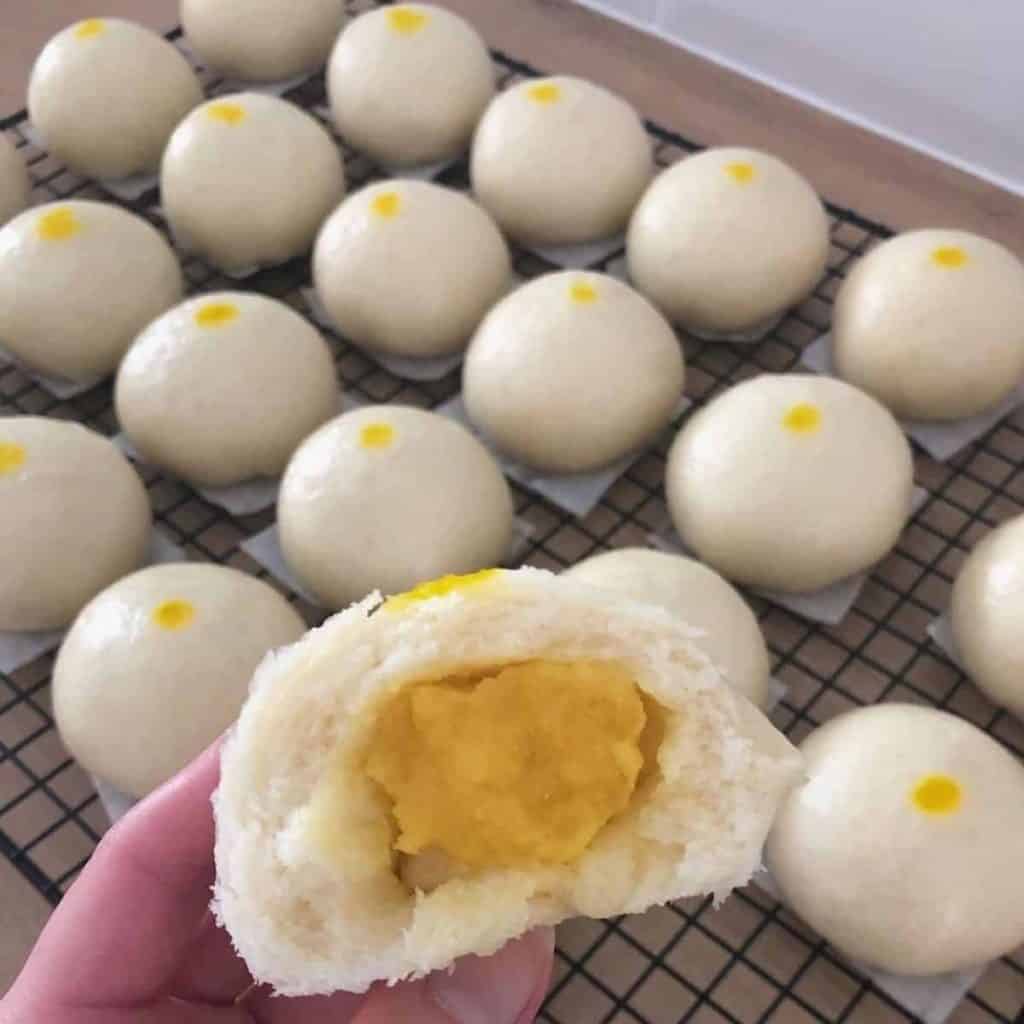
Steamed buns (bao zi)
If you’re craving a sweet treat, ‘bao zi’ or Chinese steamed buns, do also come stuffed with the sweet filling. A popular option in a dim sum line-up, the light chestnut flavour of the lotus seed paste is a great complement to the doughy bun.
We can also gift the buns as a celebration dessert. However, these buns are dyed pink and shaped like peaches, the Chinese symbol for longevity. Called a ‘longevity bun’, the buns are a gift to celebrate the long years of a senior.
Where To Buy?
You can try purchasing peeled, dried lotus seeds in Asian grocery stores, or look out for ready to mix pastes.
However, if you cannot find them in the stores, red beans, mung beans, or even oil beans also works as a substitute to make a paste for your homemade mooncakes, buns, or tangyuan.
Ingredients
In the recipe below, we will need lotus seeds, maltose, sugar, and peanut oil to make lotus seed paste.
The kernels need to be soaked overnight or at least 3-4 hours in the refrigerator before use. You will need to peel and split the kernels in half. This is so that you can remove the green core to use for the paste. Otherwise, you can buy lotus seed halves instead.
They are usually sold in Asian grocery stores or online in a 60oz bag. The peeled ones appear ivory white and are labelled as “dried” or “plain” seeds.
Maltose is a thick syrup that transforms the lotus seed paste into a malleable, easy to shape paste. If you cannot find maltose, an excellent substitute is honey.
You can substitute red beans instead of lotus beans in the recipe below to make red bean paste.
Tools
In order to split the kernels apart, a butter knife or a needle will help. Although if you wish to do so, you can also use your bare hands, just that it will take much longer!
The green centre of the seed has to be dug out and discarded, as it has a bitter taste.
A food processor or a blender for blending the beans together to create the filling in the lotus seed paste recipe will also hasten the cooking process. This will result in a smooth, creamy texture.
How to Store
We can package dried lotus seeds in plastic containers and store them in a cool dry place. We can keep them under refrigeration and maintain their freshness for more than a week.
If you have blended them, you can also store the puree in an air-tight container and keep it in the fridge up for 2 to 3 weeks. Storing it in the freezer keeps it fresh for a longer time.
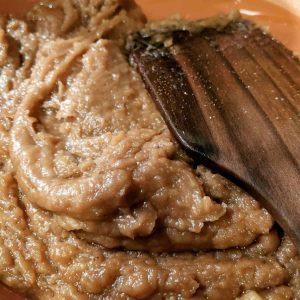
Lotus seed paste
Ingredients
- 100 g dried lotus seeds
- 70 g sugar
- 50 g vegetable oil
- 20 g maltose or honey
Cooking Instructions
- Soak the seeds in water and refrigerate them for 3-4 hours. After taking them out, remove the green core of the beans with a butter knife.
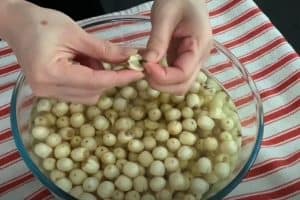
- Cook the seeds on the stove until tender, then drain off the cooking liquid. Blend the beans till smooth with a blender. Sieve the lotus seed paste when done.
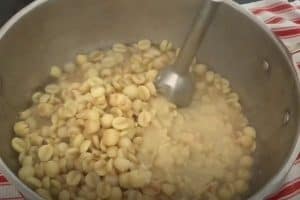
- In a pan, heat up sugar with oil until the sugar turns golden brown. Add the seed mixture to the sugar, cook, and stir. Add more oil slowly.
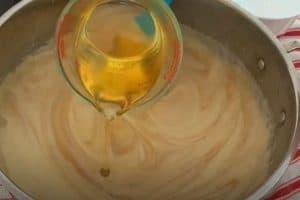
- Slowly add in the maltose, let it dissolve into the mixture. Add more oil if needed. When the paste comes apart from the pan in a piece, your paste is ready.
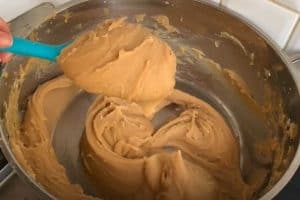
Recipe Notes
- First, if you have bought unpeeled lotus beans, you can make them even easier to peel by boiling them with alkaline water. Then, leave the pot overnight in a fridge. This method works even with peeled beans if you want to remove the green core easily.
- Second, a stainless steel pan is the easiest to cook the lotus seed paste, and it is also easy to wash.
- In step 2, poke the beans with a fork to check if they are tender. If the fork goes through, they are ready. The water should also be milky.
- Lastly, grease the spoon with some oil before scooping the maltose, to make it less sticky.
Nutrition
Calories have been calculated using an online calculator. Nutritional information offered on Honest Food Talks is for general information purposes and is only a rough estimate.
Baba's Wife on Youtube shows a variation of this sweet filling by adding in kecap manis. The addition of the dark sweet sauce deepens the colour of the filling.
And that’s all! Now you can use the sweet puree in a bun for teatime, or if you’re adventurous, make some mooncakes. The best thing about making your own paste is you can adjust the sweetness to your own liking by decreasing the amount of sugar and maltose.
With so many health benefits to lotus seeds, it’s time to try making your own lotus seed paste!
Have you have tried this recipe with success? Spread the goodness of making your own sweet dessert filling by sharing this article with a friend!
Next, check out our recipe on how to make taro paste! Another popular Asian sweet filling that is used in many Chinese and Japanese desserts.

Leandro
Great article.
Nad
Love having these especially in mantous!